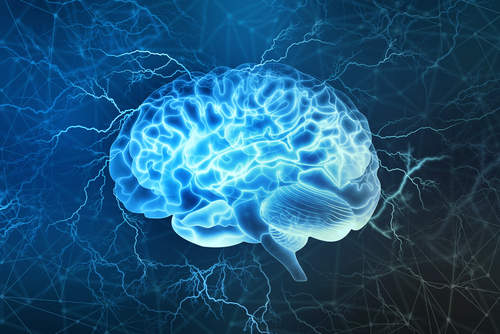Case Study Reports Abnormal Brain Changes in 3 Children with Gaucher Disease

Three pediatric cases of Gaucher disease (GD) with unprecedented brain magnetic resonance imaging (MRI) changes mainly affecting the thalamus and/or dentate nucleus were recently described in a case report.
The thalamus is a brain structure responsible for relaying information from sensory receptors to proper brain regions where it can be processed, while the dentate nucleus is involved in involuntary motor function and cognition.
The case report, “Thalamic and dentate nucleus abnormalities in the brain of children with Gaucher disease,” was published in Neuroradiology. The work was led by the Great Ormond Street Hospital for Children NHS Foundation Trust.
Clinical characteristics of pediatric GD patients include growth delay, nose bleeding, low blood cell count, spleen enlargement, and neurological symptoms.
“Although children affected by GD may present with a broad spectrum of neurological signs, brain magnetic resonance imaging (MRI) findings are usually normal or non-specific,” the researchers wrote.
But in this report, they describe three pediatric GD cases with similar neuroimaging abnormalities.
“MRI scans were performed for nonspecific symptoms such as headache in patient 1 and patient 3, and for abnormal eye movements in patient 2,” the team explained.
Patient 1 had mutations in the GD-related GBA gene and was diagnosed with GD at 6 months of age. The study did not mention the patient’s current age.
The patient eventually developed enlargement of the lymph nodes and pulmonary disease, which the clinical team initially treated with standard enzyme replacement therapy, and with oral Zavesca (miglustat) — a therapy used in GD to reduce the accumulation of harmful quantities of the fat molecule glucocerebroside — at 8 years old.
Although an MRI scan was normal when the patient was 2 years old, eight years later, imaging revealed swelling of both thalami and abnormalities within the dentate nuclei. This patient was then lost on follow-up, so no additional information could be obtained.
Patient 2 presented with eye movement abnormalities and was diagnosed with type 3 subacute/chronic neuronopathic GD at 17 months old. At the age of 8, he had a mixed motor disorder and epilepsy; an MRI scan showed changes in the dentate nuclei. The patient died at 11 years old due to progressive neurological deterioration.
At 2 years old, patient 3 had mutations in the GBA gene, presented with disease-related blood problems, and was subsequently diagnosed with GD, for which the child was started on standard enzyme replacement therapy. An MRI scan when the patient was 11 years old showed lesions in the thalami, dentate nuclei, and other brain regions.
The thalami and caudate nuclei appeared swollen. Two years later, no significant changes were found on new imaging studies.
“In all three patients, other metabolic or toxic causes for the brain abnormalities were excluded,” the investigators wrote.
The apparent symmetric pattern of neurological involvement in all three cases could be due to metabolic problems, such as the accumulation of glucosylceramide and glucosylsphingosine within the central nervous system.
In fact, evidence suggests that the buildup of such lipid-like molecules contributes to the progression of neurological issues in GD, but in this study, researchers mentioned they did exclude metabolic causes for neurological symptoms.
“In conclusion, correlation between brain MRI abnormalities, neurological symptoms, and treatment efficacy in Gaucher disease remains unclear; nevertheless, it is important to recognize abnormal findings that can be overlooked (particularly faint signal abnormalities in dentate nuclei) in such patients,” the researchers concluded.
“Future studies will hopefully elucidate the [cause] and clinical significance of brain MRI abnormalities in children with Gaucher disease,” they added.



